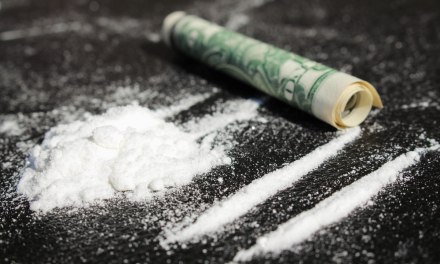The main problem with opioids as a medical treatment is that along with pain relief, they can produce another sort of pain– related to withdrawal. Once you’re dependent, with tolerance and withdrawal, you lose much of your ability to differentiate between the two types of pain.
We know that if you do have recurring physical pain, opioid withdrawal will make it seem worse. And if you don’t, withdrawal symptoms can mimic it and make you feel as if you do. You won’t be able to tell which is which, and in the absence of a clear cause, neither will your physician.
So when pain escalates or returns, it’s usually interpreted as a signal for an uptick in dose, or the addition of yet another med. That’s one reason so many pain patients find themselves on very high doses, or on complicated medication regimens– a form of polypharmacy, the simultaneous use of multiple drugs to treat one or more conditions.
Chronic pain– defined simply as pain that persists longer than 3 months– is assessed through patient report. It’s highly subjective. The patient complains and the doctor responds with medication. There’s no defined end point. It’s not unusual for painkillers to lose their effectiveness over time, motivating patients to demand more. Some researchers believe that long term use of painkillers may actually increase sensitivity to pain. You see how easy it is for the solution to become part of the problem– in some cases, the major part.
It’s possible to find pain patients who are physically dependent on opioids but lack other signs of addiction, but rarely do we see people addicted to opioids who have not also had a high level of physical dependence on opioids. Most point to the pain of withdrawal as a powerful driver of an addicted person’s behavior, including criminal activity, disease risk, and the neverending search for stronger opioids. The medical literature might claim that withdrawal lasts a week or two at most, but addicted people report symptoms for months after use ends. Not just craving, but withdrawal-like discomfort. It’s often the factor that tips the balance towards a return to opiates.
What have we learned over the years? That it’s much easier to get someone on opioids than to get them off again. And that for many, painkillers aren’t all that effective for longterm pain. We learned that the medication isn’t enough to keep many addicts from dropping out of opioid maintenance programs. We learned that like street drugs, prescription opioids can injure or kill, perhaps in even greater numbers.
Of course, we already knew all this. Somehow we went ahead and created the monster.
There’s no easy solution. Pain patients need effective treatment. Opioids may not actually be that treatment. Nonetheless, like the addicted person, medicine is dependent on opiates. And any drug that can be handed out by physicians during those shrinking 11-15 minute office visits will be hard to monitor and even harder to control. New opioids could eventually produce more of the sort of problems that plague us now.
What would I recommend? Follow the CDC’s recommendations on opioid prescribing. The current ones are designed to stem an opioid/opiate* epidemic that’s killing tens of thousands of people. We need that now. At some point, when things are working better, we can reconsider. But that comes later.
Meanwhile, work hard to develop other treatments for pain and also for addiction that are not so dependent on more and better opioids. The pharmaceutical industry, in spite of their immense resources, may not be the best candidate to come up with a solution. After all, where did the prescription drug epidemic originate?
Those same forces still exist, and exert pressure to continue our dependence on these medications.
We’ll always need opioids in medicine, but although we represent less than 5% of the world’s population, Americans currently consume 80% of the world’s opioids. Do we really suffer that much more physical pain than other people? Or have we fallen into the trap of overprescribing?
By the way, painkillers are in short supply in the developing world, where they’re desperately needed for acute pain. We can certainly ship some of ours overseas.
At reduced profit, no doubt, but then, they don’t actually cost that much to produce.
*Opiates are drugs derived from opium. Opioids at one time referred only to synthetic opiates (drugs created to emulate opium, however different chemically), but more recently the term opioid has become more generally used for the entire family of opiates including natural, synthetic and semi-synthetic.













“The medical literature might claim that withdrawal lasts a week or two at most, but addicts report symptoms for months after use ends. Not just craving, but withdrawal-like discomfort. It’s often the factor that tips the balance towards a return to opiates.”
A couple of points to make in response to the article, which is generally on point. First, as a person with a longterm history (40 years) of opioid use, who started on prescription painkillers but ultimately progressed to heroin, then spent 15 years in a MAT program using methadone maintenance therapy (I detoxed out under medical supervision in February, 2014), the term “addict” is offensive, stigmatizing and certainly not person-first language. I would strongly encourage you to consider a more strengths-based way to identify us in future posts in order to begin addressing the pervasive discrimination perpetrated against those of us with the disease of addiction.
My second point is related to the quote above; I experienced severe Post Acute Withdrawal Symptoms (PAWS) for almost two years after detoxing from methadone (and 2.5 years in, I still have them, although they are FAR less severe and I’ve developed coping strategies when they arise). I’ve now realized that it was PAWS that created the conditions for relapse, no matter how strongly committed I was to ending my opioid dependence prior to MAT. This is a critical piece of information for treatment providers because clearly i was experiencing PAWS symptoms for decades, which continually fueled my desire to “make it stop,” and the only way that I knew how was to use an opioid again, which of course created a vicious cycle.
If we’re serious about ending the opioid epidemic while retaining the use of opioids for appropriate purposes, the time to provide intensive support both during the acute withdrawal phase (heroin for me lasted 7-10 days of absolute misery; Methadone lasted approximately 15 days, with a very gradual reduction in symptoms) but importantly, 2-6 months post-acute detox from the opioid. This is especially important for those with long and chronic histories of opioid use, and this is also especially important for MAT providers, who upon discharge of a client from a MAT program, often provide no support whatsoever for the individual leaving the program. Those first two years after detoxing from opioids, particularly for those of us with long histories of use/abuse, are extraordinarily difficult to cope with, and old coping strategies die a very hard death.
Appreciate much your post, and as a person in long-term recovery from an opioid addiction, it’s critical that we raise awareness about the challenges, as well as listen to those of us who’ve gone through the entire process and are modeling successful recovery today from opioid addiction.